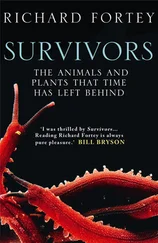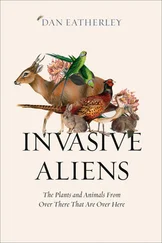Andrew H. Cobb - Herbicides and Plant Physiology
Здесь есть возможность читать онлайн «Andrew H. Cobb - Herbicides and Plant Physiology» — ознакомительный отрывок электронной книги совершенно бесплатно, а после прочтения отрывка купить полную версию. В некоторых случаях можно слушать аудио, скачать через торрент в формате fb2 и присутствует краткое содержание. Жанр: unrecognised, на английском языке. Описание произведения, (предисловие) а так же отзывы посетителей доступны на портале библиотеки ЛибКат.
- Название:Herbicides and Plant Physiology
- Автор:
- Жанр:
- Год:неизвестен
- ISBN:нет данных
- Рейтинг книги:5 / 5. Голосов: 1
-
Избранное:Добавить в избранное
- Отзывы:
-
Ваша оценка:
- 100
- 1
- 2
- 3
- 4
- 5
Herbicides and Plant Physiology: краткое содержание, описание и аннотация
Предлагаем к чтению аннотацию, описание, краткое содержание или предисловие (зависит от того, что написал сам автор книги «Herbicides and Plant Physiology»). Если вы не нашли необходимую информацию о книге — напишите в комментариях, мы постараемся отыскать её.
Discover the latest developments in herbicide and weed biology Herbicides and Plant Physiology,
Arabidopsis
Herbicides and Plant Physiology
Herbicides and Plant Physiology — читать онлайн ознакомительный отрывок
Ниже представлен текст книги, разбитый по страницам. Система сохранения места последней прочитанной страницы, позволяет с удобством читать онлайн бесплатно книгу «Herbicides and Plant Physiology», без необходимости каждый раз заново искать на чём Вы остановились. Поставьте закладку, и сможете в любой момент перейти на страницу, на которой закончили чтение.
Интервал:
Закладка:
On a global basis only about 250 species are sufficiently troublesome to be termed weeds, representing approximately 0.1% of the world’s flora. Of these, 70% are found in 12 families, 40% alone being members of the Gramineae and Compositae. Interestingly, 12 crops from five families provide 75% of the world’s food and the same five families provide many of the worst weeds ( Table 1.1). This implies that our major crops and weeds share certain characteristics and perhaps common origins.
Table 1.1 Important plant families which contain both the major crops and the worst weeds of the world.
Source: Radosevich, S.R. and Holt, J.S. (1984) Weed Ecology: Implications for Vegetation Management . New York: Wiley. Reproduced with permission of John Wiley & Sons.
| Number of species classified as the world’s worst weeds (%) | Family | Examples of major crops | Examples of major weeds | Common name |
|---|---|---|---|---|
| 44 | Gramineae | Barley, maize, millett, oats, rice, sorghum, sugar cane and wheat | Elytrigia repens (L.) | Couch |
| Alopecurus myosuroides (L.) | Black‐grass | |||
| Avena fatua (L.) | Wild oat | |||
| Sorghum halepense (L.) Pers. | Johnson grass | |||
| Echinochloa crusgalli (L.) | Barnyard grass | |||
| 4 | Solanaceae | White potato | Solanum nigrum (L.) | Black nightshade |
| Datura stramonium (L.) | Jimsonweed | |||
| Hyoscyamus niger (L.) | Henbane | |||
| 5 | Convolvulaceae | Sweet potato | Convolvulus arvensis (L.) | Field bindweed |
| Cuscuta pentagona (Engelm) | Field dodder | |||
| Ipomoea purpurea (L.) Roth | Tall morning glory | |||
| 5 | Euphorbiaceae | Cassava | Euphorbia maculata (L.) | Spotted spurge |
| Euphorbia helioscopia (L.) | Sun spurge | |||
| Mercurialis annua (L.) | Annual mercury | |||
| 6 | Leguminosae | Soybean | Cassia obtusifolia (L.) | Sicklepod |
| Melilotus alba (Desc) | White sweetclover | |||
| Trifolium repens (L.) | White clover |
1.3 The importance of weeds
Most plants grow in communities consisting of many individuals. If the resources available (such as space, water, nutrients and light) become limiting then each species will be forced to compete. Weeds are often naturally adapted to a given environment and so may grow faster than the crop, especially since the crop species has been selected primarily for high yield rather than competitive ability. A unit of land may therefore be regarded as having a finite potential biomass to be shared between crop and weeds, the final proportion being determined by their relative competitive ability.
1.4 Problems caused by weeds
The most obvious problem caused by weeds is the reduction of yield through direct competition for light, space, nutrients and water. Weeds can have many further effects on the use of land, as illustrated in Table 1.2.
Table 1.2 Problems caused by weeds.
Source: Naylor, R.E.L. and Lutman, P.J. (2002) What is a weed? In: Naylor, R.E.L. (ed.) Weed Management Handbook, 9th edn. Oxford: Blackwell Publishing/BCPC. Reproduced with permission of John Wiley & Sons.
| Problem | Mechanism |
|---|---|
| Reduced crop yield | Interference with access to light, water and nutrients |
| Reduced crop quality | Admixture of contaminating seeds in arable crops Contamination of vegetable crops |
| Delayed harvesting | Conservation of moisture may delay ripening and increase moisture level when harvested |
| Interference with harvesting | Climbing plants making combining more difficult Vigorous, late‐growing weeds interfering with harvesting of potatoes and sugar beet |
| Interference with animal feeding | Plants with spines or thorns inhibiting animal foraging |
| Poisoning | Poisoning either through ingestion or through contact |
| Tainted animal products | Imparting an undesirable flavour, e.g. to milk |
| Plant parasitism | Competing for nutrients and water |
| Reduced crop health | Acting as an alternative host for crop pests and diseases Increasing the amount of vegetation at the base of the crop, increasing moisture and disease |
| Reduced animal (and human) health | Acting as an intermediate host or a vehicle for ingestion of pests and parasites Photosensitivity Teratogens Carcinogens |
| Safety hazard | Reducing vision on roadsides Causing a risk of fire under electricity lines and on garage forecourts |
| Reduced wool quality | Hooked seeds reducing the value of fleece |
| Water flow prevented | Plant mass blocking ditches and irrigation channels |
| Allelopathy | Releasing substances toxic to the growth of crop plants |
| Impacted crop establishment | Vegetation preventing the establishment of young trees Competing for space with establishing crops |
1.4.1 Yield losses
Crop losses approaching 100% are recorded in the literature ( Table 1.3; Lacey, 1985). Such yield losses will, of course have a profound effect on a national economy in terms of both the need to import foodstuffs and the costs of weed control. Despite the many methods of weed management that are now available worldwide, it is estimated that approximately 13% of crop losses are still due to weeds alone ( Table 1.4). Indeed, in 1974 the annual cost of weeds to agriculture in the USA was estimated at US$10 billion, with 50% owing to yield reductions and 50% owing to the cost of weed control (Rodgers, 1978).
In the tropics, parasitic weed species from the genera Cuscuta (dodders), Orobranche (broomrapes) and Striga (witchweeds) can have a profound effect on a range of crops. They absorb nutrients directly from the crop plant, which may not set seed at all in the case of cereals such as sorghum.
Weed control techniques are therefore aimed at the reduction in the competitive ability of weeds in a crop and the prevention of weed problems in a future crop. The former is increasingly based on chemical use, and the latter also requires suitable cultural and agronomic practices.
Yield loss may be usefully related to the number of weeds per unit area causing a defined yield loss in a defined crop, that is, as a Weed Threshold ( Table 1.5) or as a Crop Equivalent (the amount of resource an individual weed uses expressed as the number of crop plants this resource would support, although in practice it is the biomass of the weed and the crop which is measured). Generally, these figures have only been determined for weed interaction with major crops, but they give a good indication of the ability of a particular species to compete with all crops.
Table 1.3 Examples of yield losses owing to weeds.
Source: Lacey, A.J. (1985) Weed control. In: Haskell, P.T. (ed.) Pesticide Application: Principles and Practice . Oxford: Oxford University Press, pp. 456–485. Reproduced with permission of Oxford University Press.
| Crop | Yield loss (%) | Country |
|---|---|---|
| Cassava | 92 | Venezuela |
| Cotton | 90 | Sudan |
| Groundnuts | 60–90 | Sudan |
| Onions | 99 | UK |
| Rice | 30–73 | Colombia |
| Sorghum | 50–70 | Tanzania/Nigeria |
| Sugar beet | 78–93 | Texas, USA |
| Sweet potatoes | 78 | West Indies |
| Wheat * | 66 | UK |
| Yams | 72 | Nigeria |
* From Moss (1987).
Читать дальшеИнтервал:
Закладка:
Похожие книги на «Herbicides and Plant Physiology»
Представляем Вашему вниманию похожие книги на «Herbicides and Plant Physiology» списком для выбора. Мы отобрали схожую по названию и смыслу литературу в надежде предоставить читателям больше вариантов отыскать новые, интересные, ещё непрочитанные произведения.
Обсуждение, отзывы о книге «Herbicides and Plant Physiology» и просто собственные мнения читателей. Оставьте ваши комментарии, напишите, что Вы думаете о произведении, его смысле или главных героях. Укажите что конкретно понравилось, а что нет, и почему Вы так считаете.











